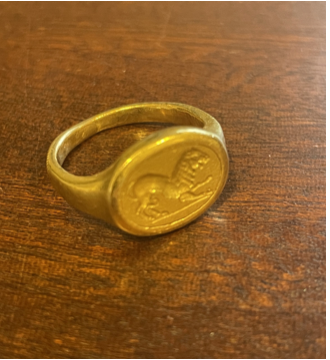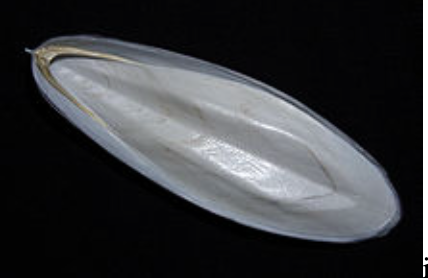Cuttlefish Creation
Polly’s work has been greatly influenced by the ancient jewellers; mycenaean, Egyptian, Persian and of course Roman and Greek, and I inherited this passion from her. Recently we’ve been drawn to Roman design quite a lot, in particular intaglio work. The history of intaglio is a whole story in itself, but I just want to touch on it briefly with this little ring.
Many years ago Polly bought this ring in Venice depicting the lion of St. Mark’s. We thought it would be wonderful to be able to make and sell something like this ourselves and really the only way to do it was to take a casting from it and make our own version. We didn’t want to replicate the whole ring, we just wanted the intaglio lion, and in our search were introduced to the the art of using cuttlefish bone for taking the impression. It turns out that cuttlefish bone carving and casting dates back thousands of years to the civilizations we so admire - Phoenicians, Greeks and Romans - so it all fits together perfectly. Cuttlefish bone sounds so unlikely, but it is very soft and sort of powdery and really good for carving, so we thought it would probably take a good impression, and we gave it a go.
Luckily cuttlefish is not expensive to buy because it took more than one try to get the perfect impression by pressing the ring straight into the cuttlefish. Press too hard and the sides crumble and the image is distorted; too soft and the impression is not enough from which to take a casting, and then suddenly we got it right. Just enough pressure and there was a tiny, perfect little lion in the middle of a big piece of cuttle fish.
I don’t intend to give you a lesson in casting in cuttlefish, but suffice it to say that it was a nervous time cutting the pouring channel down to our little lion, and even more nerve wracking pouring the molten silver into the cuttlefish, but what a result! It came out absolutly perfectly. A bit of a clean up before setting it in the ring, and then a dip in oxidising liquid (rotten eggs, hold your nose!) and voila! It’s no wonder then that with these ancient – and really fun – methods, and the ancient design inspirations all around, that we just love making these treasures. They’ve always been loved by magpies, too.




